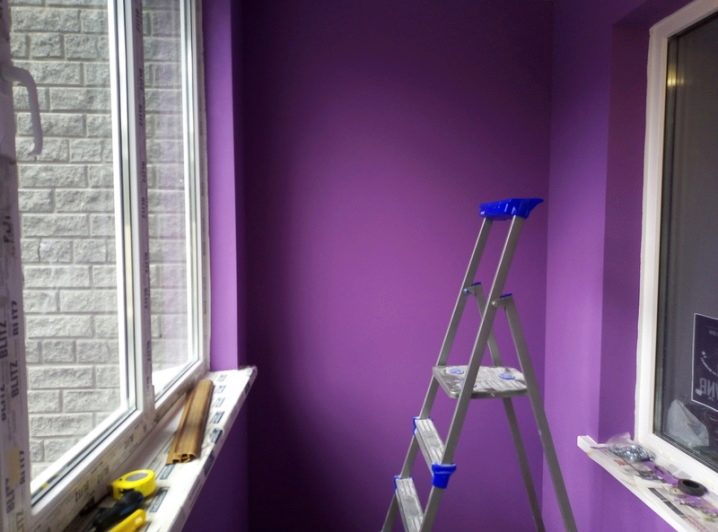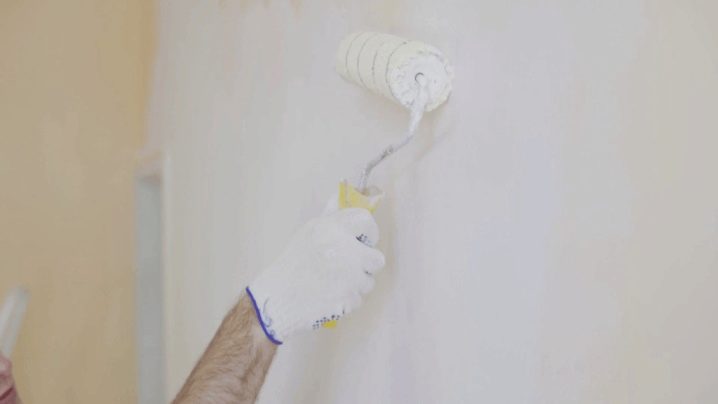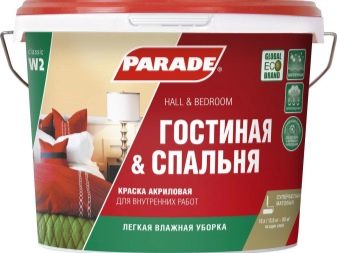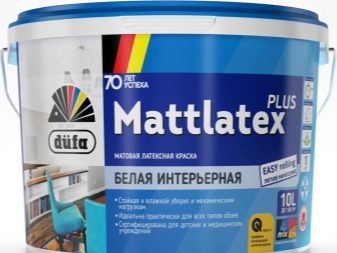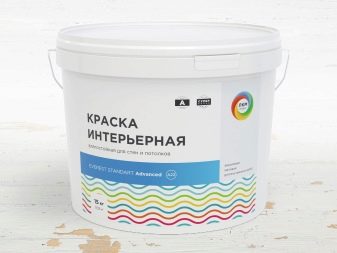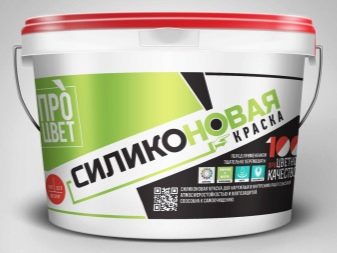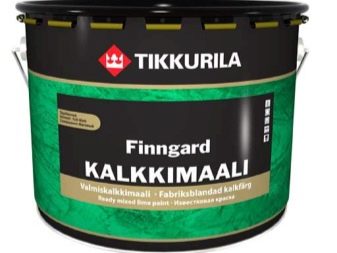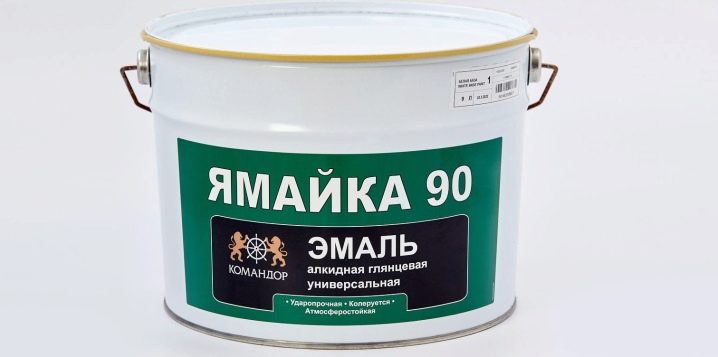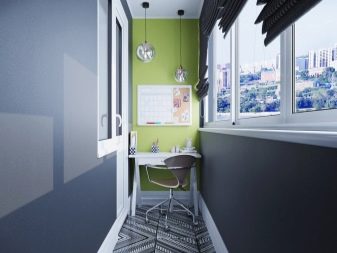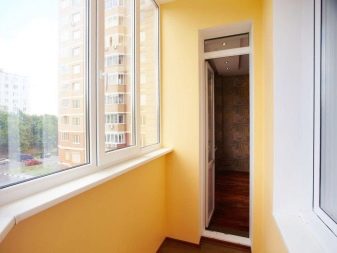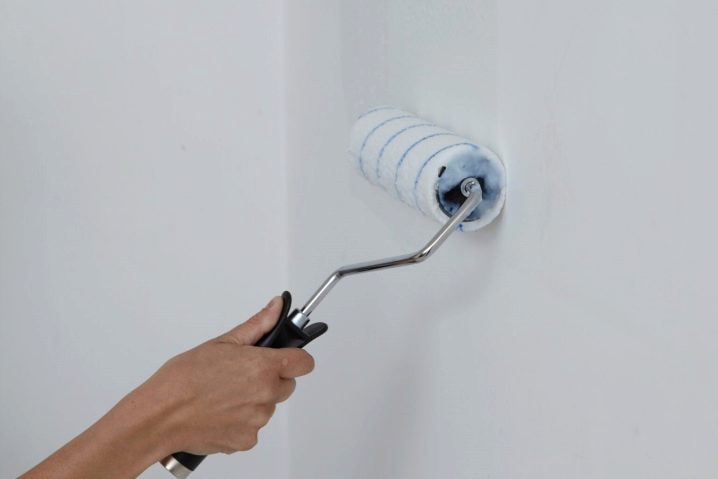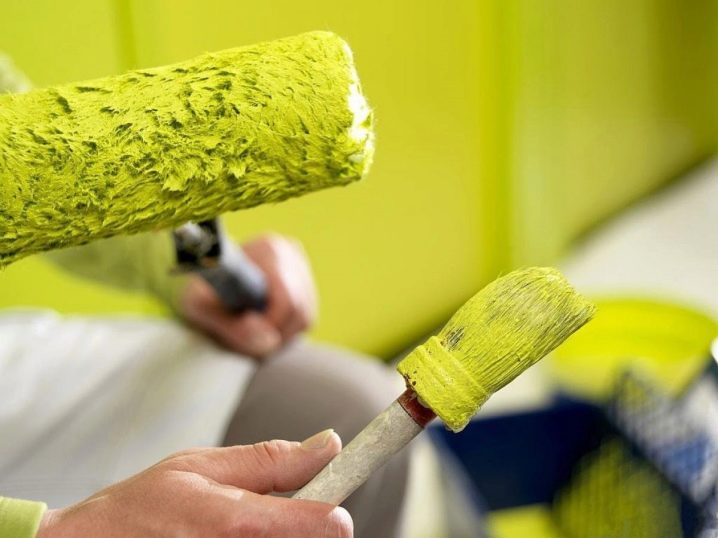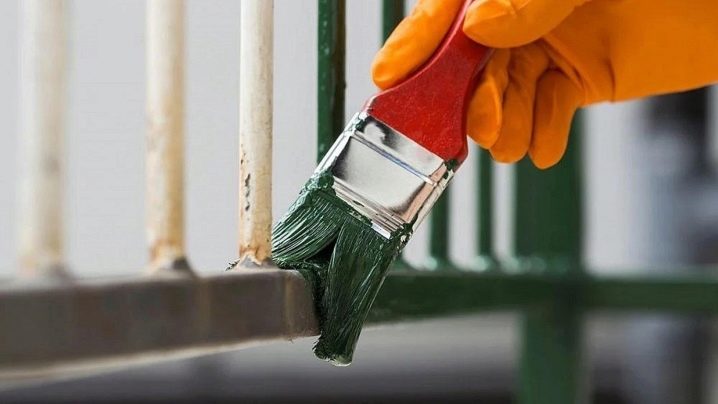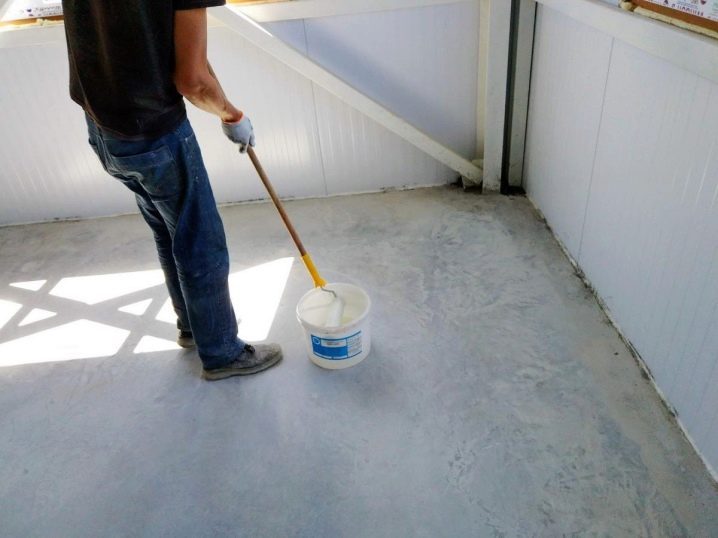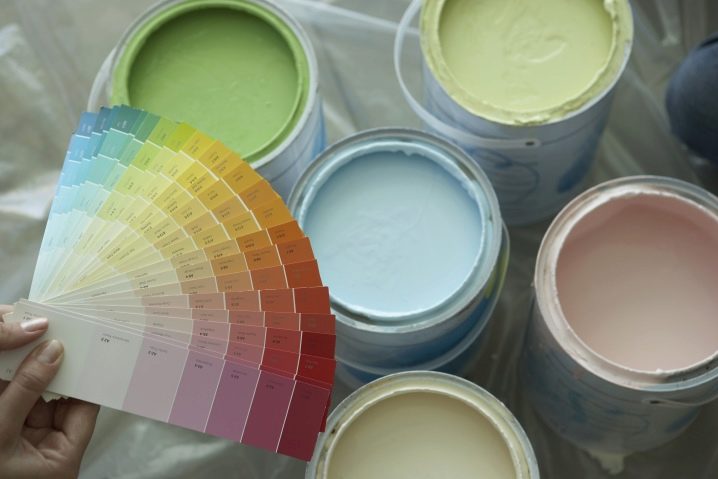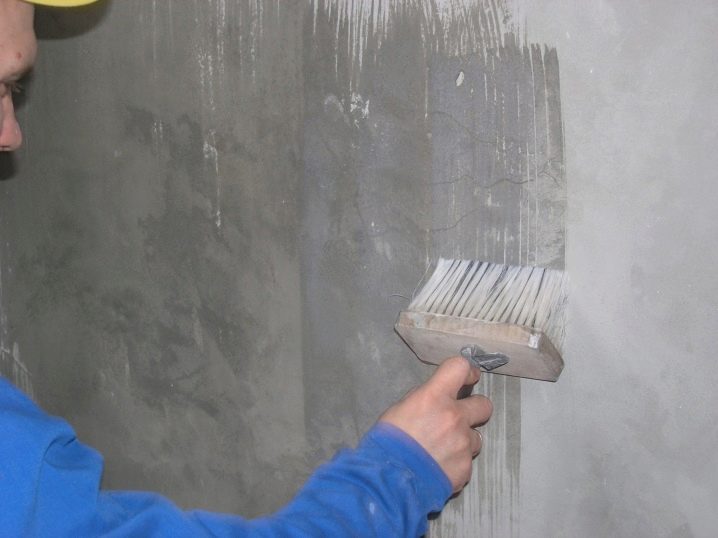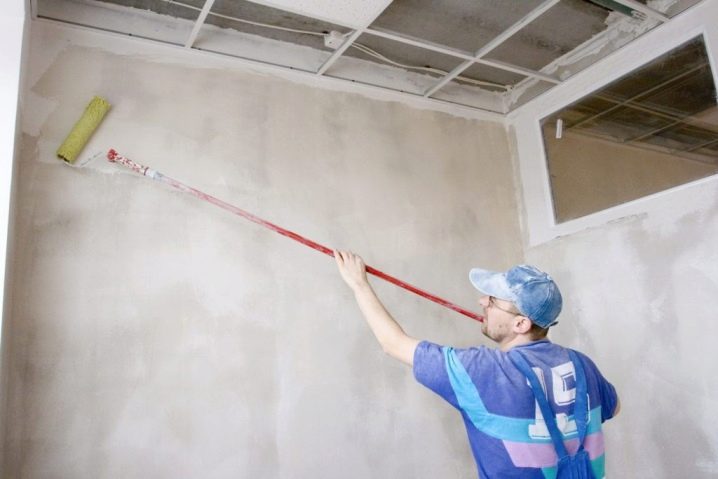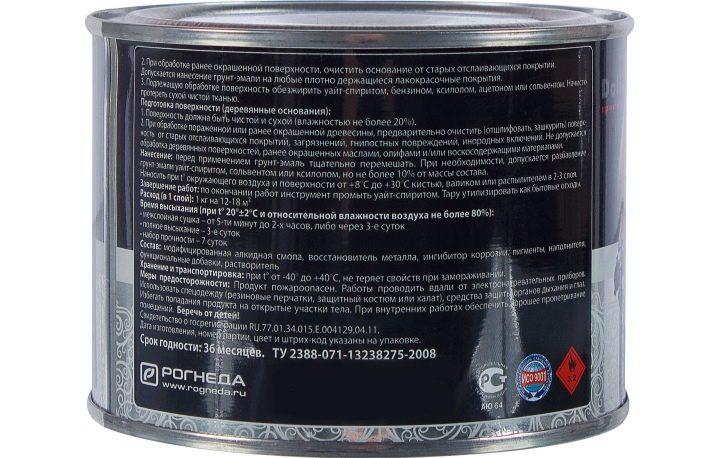All about painting the balcony and loggia
To make the balcony or loggia more attractive and at the same time not spend a lot of money, you can paint the walls, floor and ceiling in the original shade. A rich assortment of paints allows you to choose a color for any design. Working with enamel is simple, even without professional skills. Before you start painting, you need to purchase the necessary tools and prepare the surfaces.
Advantages and disadvantages
With paint, you can quickly and inexpensively renovate a room. A wide variety of colored enamel allows you to choose the best option for any interior style. Also, manufacturers offer a wide selection of formulations that differ not only in price, but also in performance.
It is not difficult to work with formulations, even without professional skills. The tools needed for the job are inexpensive, and you can find a wide variety of them in any hardware store.
The painted balcony will retain its attractiveness for a long time.
However, this method has its drawbacks.
- Some formulations lose their saturation in the sun.
- Prepare the surface before applying. And if inaccuracies are made in the preparation process, the coating will quickly deteriorate.
- The peculiarity of each type of paint should be taken into account. One formulations are resistant to ultraviolet light, while others are not afraid of moisture and wear-resistant.
How to paint?
To choose the right composition, you need to understand their variety.
Acrylic enamel
This product has become widespread. It is safe for health and has an environmentally friendly composition. This is an odorless paint, so it is great for painting a room from the inside.
It is easy to apply the composition, and the coating dries up in just a few hours.
A quality product is highly resistant to abrasion and direct sunlight. High decorative properties can be achieved by tinting. The product has a high vapor permeability. The approximate consumption of the composition is 0.5 kilograms per square meter.
Latex paint
After application, a film appears that does not allow moisture to pass through. This property is achieved due to the latex in the composition. The product can be used as a facade paint that can mask minor imperfections on the walls. The coating is not afraid of ultraviolet radiation, while maintaining saturation.
Silicone based formulations
The result is a durable, durable coating that repels water. Due to this property, the walls can be cleaned independently after rain. High-quality silicone paint has a high hiding power and elasticity. It can be used to cover minor defects.
The paint is not afraid of high temperatures and mechanical damage. Manufacturers add special antibacterial components to the composition that prevent the appearance of mold. Service life - 20 years. Disadvantages include an unpleasant odor and a long drying time. 200 grams are consumed per meter.
Silicate paint
A product based on liquid glass, thanks to which the enamel is reliably adhered to the surface. Reliable chemical compound provides high bond strength. At the same time, the paint allows moisture to pass through. Possesses increased resistance to chemical components, sudden changes in temperature and direct sunlight. The coating dries for a long time, about a day.
Alkyd enamel
The composition is obtained by mixing a dye, a solvent and a synthetic resin. Due to the pungent odor, enamel is not used for interior decoration. Durable, wear-resistant coating that is resistant to stress, shock and chemical components.
Water based paint
Safe water-based enamel. It is better not to use such a product due to insufficient abrasion resistance and sudden temperature changes. The only way to use this paint is to cover the ceiling.
Color selection
When choosing a balcony design, it is better to abandon acidic and overly bright colors that will strain the psyche. The best option is light and pastel shades, the following colors and shades are widespread: white, beige, peach, light pink, lilac and others. If you want to decorate the room in an original way, you can choose richer options.
A thick blue color will look beautiful, moreover, it is able to relieve stress.
Another non-standard design idea is painting the walls in different colors. On one of them, you can arrange a large drawing or pattern. If the balcony is brick, these elements are decorated in different shades. The play of contrasts looks stylish and expressive, for example, a combination of black and white, cream with dark brown and other similar options.
Required tools
You will need such tools to work.
- Rollers in different sizes.
- Pallet for paint.
- Brushes (it is advisable to prepare two sizes - 5 and 15 centimeters).
- Spray gun.
It is advisable to paint over the main part of the room with a roller or a wide brush. The joints are processed with a narrow brush. To cover the balcony as quickly as possible, and the enamel lay evenly, use a spray gun. However, to work with him, you need to have certain skills.
Painting technology on different surfaces
Any surface needs to be handled correctly. Also, the painting process necessarily includes preparation. If this stage is not taken seriously enough, the final result will not live up to expectations. It is recommended to use a specific enamel composition for each finish.
Metal structures
As a rule, metal frames, railings and other elements are found on open balconies. To maintain their neat appearance and extend their service life, it is necessary to choose the right composition. Experienced experts recommend choosing a special paint "3 in 1", which includes anti-corrosion components.
This paint can be used without applying a primer. Such formulations are easy to apply, dry quickly and are available in a rich variety of colors.
One square meter will need about 200 grams.
Step-by-step instruction.
- The first step is preparation. The surface is cleaned from dust and dirt.
- If there is old paint, it must be removed. If there are foci of corrosion, these areas need to be treated more thoroughly. Serious damage must be repaired by replacing individual components. It is also advisable to level the surface.
- It is recommended to clean the professional sheet before painting. It is better to remove these elements and fully process them with fine sandpaper, even if no traces of rust are found. This will ensure that a fresh coat of paint will lay down neatly and evenly.
- Another important element in the preparation process is surface degreasing. You can use gasoline or regular thinner. Also, processing will get rid of fine dust. This step must be performed immediately before applying the enamel.
- It is best to apply paint with a roller or brush. It is advisable to paint the elements in two layers. The composition is thoroughly mixed and the solvent is added. Information about the use of the dye composition will definitely be indicated on the package.
Painting on concrete, brick and gypsum plaster
This option is quite common, since many multi-storey buildings were erected from bricks or slabs. Experts recommend choosing acrylate compounds. They fit perfectly on any of the above surfaces.
A high-quality composition will retain its integrity and saturation even under the influence of direct sunlight. Also, the paint is not afraid of high humidity. With the help of special coloring compositions, the enamel can be given any color. One standard package of 4.5 liters is enough to paint a standard balcony in two layers.
The workflow has its own characteristics, depending on the type of surface to be painted. If you need to decorate a brick wall, the surface is pre-cleaned.
The seams are processed separately to make the room look more neat. If necessary, the seams are leveled and wiped with a solvent. After the wall dries, the remaining mortar is also washed off.
On a concrete wall, the paint will look great if it is cleaned of small debris and dust. If there are cracks on the surface, they must be repaired with cement. The concrete floor on an open or closed balcony can also be painted with the same compound that was used for the walls.
When working with plastered surfaces, they also need to be properly prepared. All flaws are sealed with cement mortar. Check the area to be coated for integrity. To do this, tap the wall. A dull sound indicates that the old finish is starting to flake off and needs to be removed. A new layer of putty will ensure a reliable adhesion of the outer layer to the paint. Molds must be eliminated and treated with special antibacterial compounds. These drugs will help not only get rid of plaque, but also prevent its further appearance.
The work is carried out according to the following scheme.
- The room is cleaned with a broom and a vacuum cleaner.
- The walls are covered with a special compound to which antifungal components are added.
- Apply the primer carefully and evenly. If the composition is too much, smudges will appear.
- If white enamel with the addition of a colored pigment will be used for painting, the paint must be immediately prepared in the required volume. When choosing its color, it is imperative to take into account the furnishings, furniture and decorative elements.
Note: Color pigment should be added to all the paint that you plan to use, as it will be difficult to prepare the same shade yourself.
Paint on wood, plywood and boards (chipboard and fiberboard)
The above building materials are widely used in the decoration and insulation of balconies. With their help, you can not only diversify the appearance of the room, but also create a cozy atmosphere. If the walls are faced with wood, it is recommended to choose acrylic paint. It is also suitable for painting a wooden frame and other similar elements. The coating can have a glossy or matte texture.
If there are stains on the surface, they must be removed. Check all items for reliability. All parts must be clean and firmly attached. Preliminary putty is needed not only for the paint to lay flat and retain its attractiveness for a long time. Also, with its help, minor damage is repaired and various irregularities are corrected.
The slightly sagging putty is covered with a second layer.
Next comes the processing with fine-grained sandpaper. This step is optional, you can skip it. To achieve an excellent result, you will need a high-quality primer, which will protect the surface from dampness and additionally strengthen it. Experts advise using acrylic compounds that contain antiseptic additives.
After applying the primer in one layer, check the surface for lint. If there is one, it is necessary to apply another layer. Once the primer is dry, you can start painting the surface.The paint is often applied in two coats, but only after the first coat has dried. So the color will be as saturated as possible, and the surface and other structures will be protected as reliably as possible.
If you are going to paint a floor made of wood planks or chipboards, regular acrylic paint will not work. For these purposes, it is necessary to use special compounds intended for horizontal surfaces. This enamel has increased wear resistance.
Drywall painting
The paint should be moisture resistant due to the fact that the temperature often changes on the balcony or loggia. The humidity indicator also jumps there. Most professionals advise using latex enamel.
Such compositions are not afraid of high humidity, and the coating can be cleaned with a damp cloth. This is a practical and affordable option for interior decoration.
Before painting drywall, thorough preparation is also carried out, however, the work does without leveling the surfaces and applying putty. The workflow is carried out as follows.
- The first stage is cleaning from dirt and dust. All small cracks and other defects should be corrected. Damage is putty to make the surface even and neat.
- The next step is primer. This process is mandatory, especially if the shade of the paint is different from the drywall. The primer increases the adhesion of the paint. If you skip this important step, you will have to paint the surface in several layers (3-4 layers).
Note: regardless of where the painting process will be carried out (new panel house, old house, private building) and which surfaces need painting, it is necessary to choose high-quality compositions. Be sure to check the expiration date of the enamel.
Inside
When painting a loggia or balcony with your own hands, you need to prepare the necessary tools. Brushes and rollers of different sizes should be kept clean and close at hand. If you intend to use a spray gun but do not have the necessary experience with this equipment, practice on other surfaces. This tool is recommended for painting large balconies to save time.
If work is carried out on a glazed balcony, you need to open the windows so that the smell of paint does not cause discomfort.
The next layer of paint is applied only after the first has dried. Preparation of horizontal surfaces is carried out in the same way as preparation of walls.
Outside
If the balcony is located at a high altitude and needs to be painted outside, it is recommended that you seek the services of a professional team. Otherwise, you can suffer yourself. Specialists use special safety equipment required by safety requirements. The working process does not differ from painting a room from the inside, however, other compositions are used for outdoor decoration. They are more durable and may have an unpleasant odor that quickly disappears in the fresh air. To paint the balcony on the first floor, in addition to the standard set of tools, you will need a stepladder or ladder.

